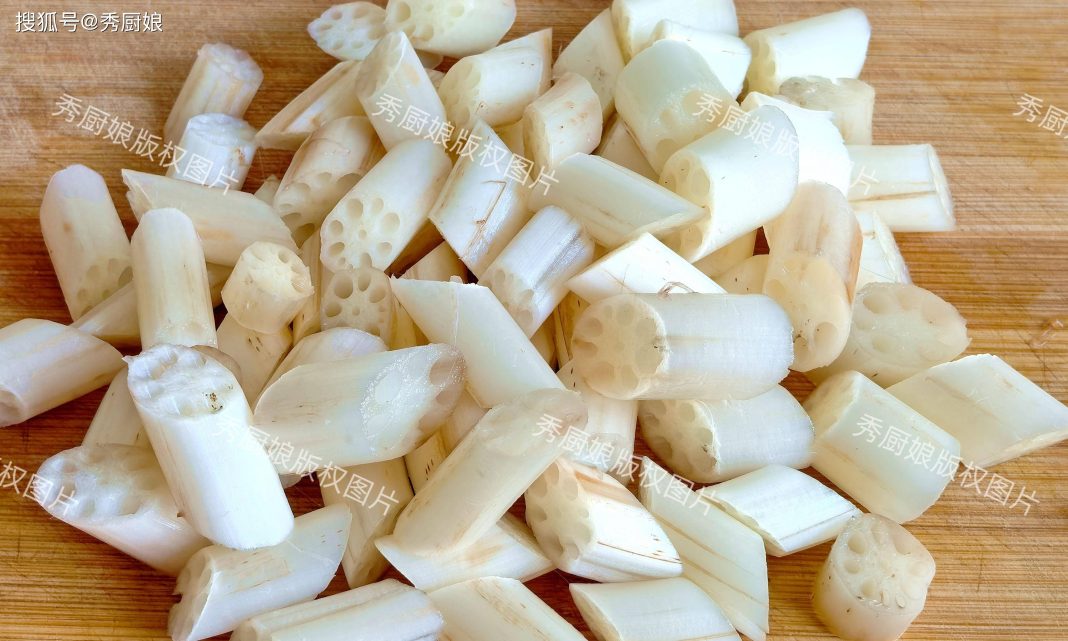Beginning of autumn, as the first solar term of autumn, marks the end of summer and the start of autumn. At this time, the weather gradually cools down, with greater temperature differences between morning and evening, providing a hint of coolness throughout the day and night. However, in the southern regions, high temperatures often persist after the start of autumn, making the power of the “autumn tiger” not to be underestimated. Therefore, maintaining a proper diet, nourishing the lungs to alleviate dryness, reducing heat, and promoting digestive health become especially important.
As the saying goes: “Lotus root is a treasure all over, and autumn lotus root is the most nourishing.” Lotus root has been regarded as a precious ingredient since ancient times, as all parts can be used for medicine and food, especially after the beginning of autumn, which coincides with the harvesting season for lotus stems. Lotus stems, also known as lotus whips, are the tender stem parts of lotus roots, resembling slender bamboo whips, with a crunchy and refreshing taste. They are rich in moisture and nutrients, making them a seasonal vegetable hard to come by after the beginning of autumn.
Lotus stems are not only delicious but also highly nutritious. They are rich in dietary fiber, promoting gastrointestinal motility, aiding digestion, and preventing constipation. At the same time, lotus stems contain abundant vitamin C and various minerals such as calcium, iron, and potassium, which can enhance immunity and strengthen the body’s constitution. Additionally, lotus stems have a cooling effect to reduce heat, making them especially suitable for consumption during the hot early autumn. Moreover, their high iron content can effectively replenish qi and blood, making them suitable for those with weak constitutions or anemia. The properties of lotus stems are mild, nourishing the lungs and moistening dryness, alleviating coughs and throat discomfort caused by dryness, making them an excellent tonic for autumn.
Recommended recipe: Stir-fried lotus stems with eggs
Ingredients: 200 grams of fresh lotus stems, 2 eggs, 2 sprigs of scallions (optional), an appropriate amount of cooking oil, salt to taste, and a pinch of chicken essence.
Instructions:
1. Preparing the ingredients: Wash the lotus stems and cut them into segments about 5-6 centimeters long, trying to keep them uniform in length for even cooking. If the lotus stems are thick, you can split them lengthwise to reduce cooking time. Crack the eggs into a bowl, add a pinch of salt, and beat them well for later use. Adding salt to the eggs not only enhances the base flavor but also makes the scrambled eggs more tender.
2. Stir-frying the lotus stems: Heat a pan without oil, add the chopped scallions once the oil is hot, and stir-fry until fragrant, then add the lotus stem segments. Stir-fry on high heat for 1-2 minutes until the lotus stems change color and become slightly transparent. Add a pinch of salt and chicken essence for seasoning, stir-fry evenly, then set aside. Quick stir-frying helps retain the crunchy texture of the lotus stems while preventing prolonged heating that could lead to nutrient loss.
3. Mixing and stir-frying: Use a clean pan, add an appropriate amount of cooking oil, and once hot, pour in the beaten egg mixture. Stir-fry over medium heat until the eggs are set but still retain some tenderness. Turn off the heat and let the eggs cook through with residual heat; then add the stir-fried lotus stems back into the pan and mix evenly with the eggs for a few seconds, allowing them to combine fully. Finally, adjust with a bit more salt to taste, stir-fry well, and serve.
This dish of stir-fried lotus stems with eggs is not only simple to make but also visually appealing with its golden color, delicious flavor, and rich texture. The crunchiness of the lotus stems complements the smoothness of the eggs, with every bite filled with the essence of autumn. Most importantly, the dish retains the fresh aroma and nutrition of the lotus stems, providing heat relief and nourishing the lungs and stomach, particularly suitable for consumption after the beginning of autumn.
Cooking tips:
1. Quick high-heat stir-frying: Lotus stems contain a lot of moisture and can easily lose their crunch, so maintain high heat while cooking to ensure their fresh and crunchy texture and nutritional value are preserved.
2. The tender and smooth texture of the eggs: The cooking time for the eggs is crucial. Turn off the heat when they are about 80% cooked, allowing residual heat to finish cooking them, which preserves their tenderness and contrasts with the crispy lotus stems, enhancing the overall textural experience.
3. Appropriate seasoning: Lotus stems have a naturally sweet flavor and do not need excessive seasoning; a simple touch of salt is sufficient, avoiding heavy flavors that might overshadow their natural taste.


